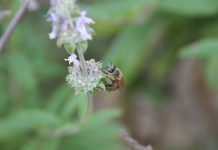
Researchers have discovered a marine fungus that can break down the plastic polyethylene (PE), the most common plastic in the ocean, but only after it has been exposed to UV light from the sun.
This important finding was published in the journal Science of the Total Environment by scientists from the Royal Netherlands Institute for Sea Research (NIOZ), along with colleagues from various international institutions.
The fungus, Parengyodontium album, lives with other marine microbes on plastic waste in the ocean.
The NIOZ team found that this fungus can break down PE particles. The study involved collaboration with experts from Utrecht University, the Ocean Cleanup Foundation, and research institutes in Paris, Copenhagen, and St. Gallen, Switzerland.
This discovery adds P. album to a very short list of only four known marine fungi capable of degrading plastic.
To uncover these plastic-degrading microbes, researchers collected plastic waste from heavily polluted areas in the North Pacific Ocean.
In the lab, they grew the fungus on special plastics containing labeled carbon, allowing them to track the carbon during the degradation process.
“We used 13C isotopes, which act like tags, to trace the carbon as the fungus breaks down the plastic,” explained Vaksmaa, one of the lead researchers. “This method lets us measure the degradation process accurately.”
They observed that P. album breaks down PE at a rate of about 0.05% per day. Interestingly, most of the carbon from the PE is converted into carbon dioxide, which the fungus releases.
The researchers also found that sunlight is essential for the fungus to break down PE. In the lab, P. album only degraded PE that had been exposed to UV light for a short period. This means the fungus can only break down plastic that has floated near the ocean’s surface.
“UV light was already known to mechanically break down plastic, but our results show that it also helps marine fungi biologically break down plastic,” Vaksmaa said.
However, not all plastic floats on the surface; much of it sinks into deeper ocean layers where it doesn’t get exposed to sunlight. Vaksmaa believes that other unknown fungi might be capable of breaking down plastic in these darker, deeper parts of the ocean.
“Marine fungi can break down complex carbon materials. There are many marine fungi, so it’s likely that more species are contributing to plastic degradation,” she added.
Finding plastic-degrading organisms is crucial because the production of plastic is enormous and increasing.
Humans produce over 400 billion kilograms of plastic each year, a number expected to triple by 2060.
Much of this plastic ends up in the sea, from the poles to the tropics, floating on the surface, sinking to greater depths, and eventually reaching the seafloor.
Lead author Vaksmaa highlighted the urgency of this issue, noting that massive amounts of plastic get trapped in subtropical gyres—large, ring-shaped ocean currents.
“About 80 million kilograms of floating plastic have accumulated in the North Pacific Subtropical Gyre alone, which is just one of six major gyres worldwide,” she said.
This discovery opens up new possibilities for tackling the massive problem of plastic pollution in the oceans by using nature’s own tools—marine fungi.



